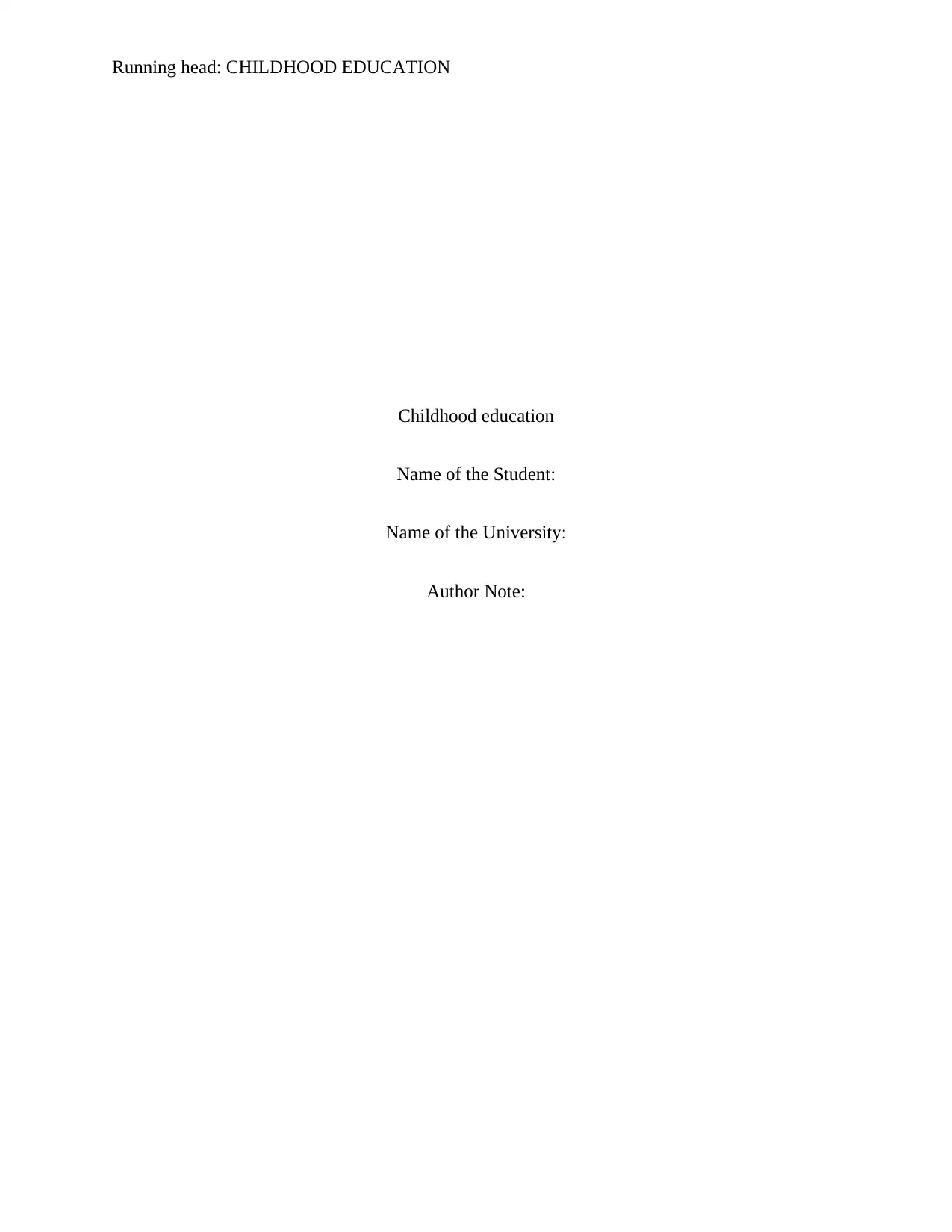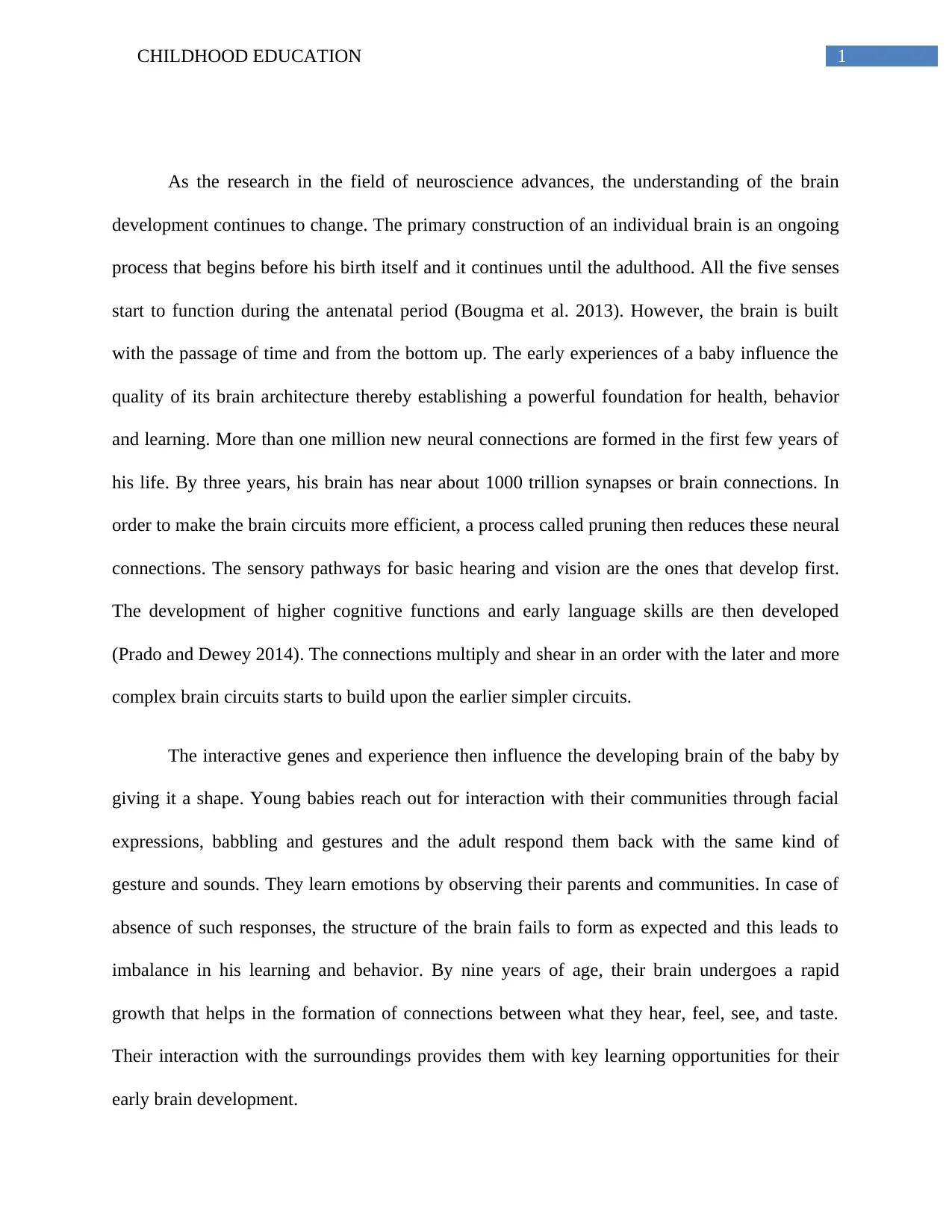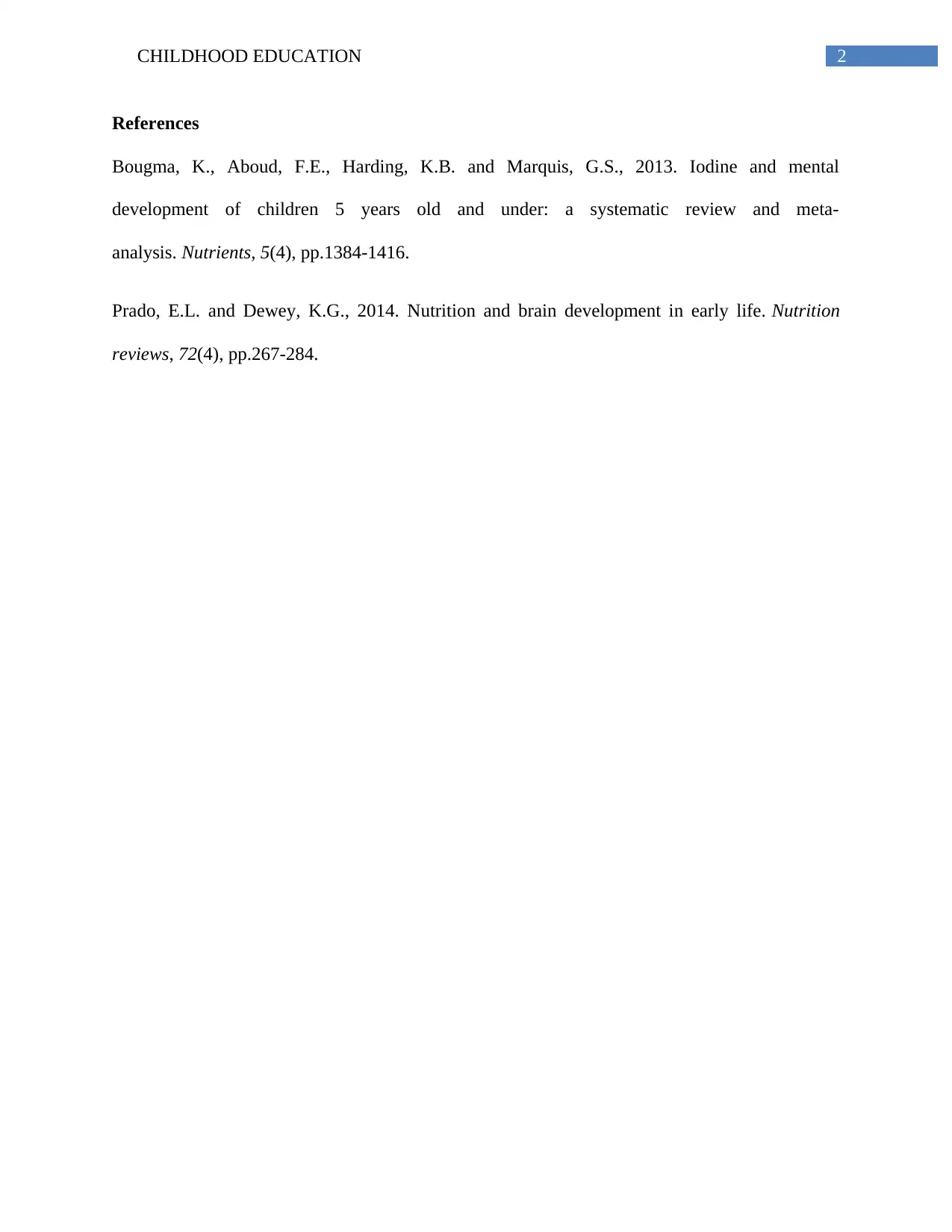Childhood Education: The Role of Brain Development in Learning
VerifiedAdded on 2020/04/15
|3
|454
|54
Homework Assignment
AI Summary
This assignment examines the critical role of brain development in childhood education. It explores the formation of neural connections, sensory pathways, and cognitive functions. The research highlights how early experiences significantly shape brain architecture, impacting learning and behavior. The assignment references key studies, such as those by Bougma et al. (2013) and Prado and Dewey (2014), to illustrate the importance of early interactions and environments in fostering healthy brain development. It emphasizes that the brain undergoes rapid growth during the early years, particularly in the formation of connections between sensory inputs, such as what children hear, feel, see, and taste. The assignment stresses the need for responsive interactions with caregivers to facilitate optimal brain development, as the absence of such interactions can hinder the expected formation of the brain structure, leading to imbalances in learning and behavior. The assignment underscores that the brain's development is a continuous process, starting before birth and continuing into adulthood, where early experiences lay the foundation for later cognitive functions and emotional development.
1 out of 3









![[object Object]](/_next/static/media/star-bottom.7253800d.svg)